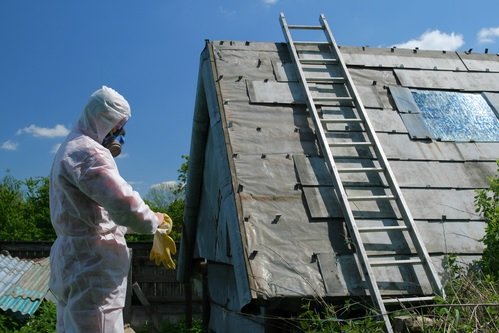
In 2015, 4,465 asbestos cases were filed in the United States, according to data analyzed by KCIC. The average number of companies named per lawsuit was 69, generating an enormous 308,085 potential legal transactions involving nearly 9,000 defendants. It’s not unusual for asbestos settlements to range from $1 to $5 million or more, according to legal site Nolo.
If your company handles asbestos, it’s vital to take pre-emptive steps to avoid this type of expensive lawsuit. Here are some things you need to know to protect your company from costly and time-consuming asbestos litigation.
Know Your Risks
Asbestos is used mainly in the construction industry in building materials. OSHA estimates that 500,000 employees work directly with asbestos, but millions more may be indirectly affected by working near areas where asbestos is being used, which is often how exposure occurs. Additionally, workers can bring asbestos fibers home on their bodies or clothes, which can affect their families and friends. Fibers can be inhaled or swallowed, and once they enter the body, they tend to remain indefinitely. Exposure can lead to pneumonia, scarred lungs, lung cancer, mesothelioma, and gastrointestinal cancer. There are no safe levels of exposure. For those affected, consulting asbestosis lawyers can provide legal assistance and support in seeking compensation for health issues caused by asbestos exposure.

Know Your Regulatory Responsibilities
Federal laws and regulations guarantee all workers the right to work in a safe and healthy workplace. Employers whose workers face a risk of asbestos exposure must take proactive steps to mitigate this risk. Building and facility owners also share this responsibility. Employer responsibilities include implementing engineering controls, following safe workplace procedures, posting warning signs and labels, providing protective equipment and training, following medical surveillance procedures and monitoring asbestos levels.
Controls and monitoring must ensure that over an eight-hour shift, workers are not exposed to more than an average of one-tenth of an asbestos fiber longer than five micrometers per cubic centimeter of air (0.1 f/cc). Workers also cannot be exposed to more than 1 f/cc of airborne asbestos on average over a thirty-minute interval.
Workers who are exposed to asbestos concentrations above standard levels must undergo medical surveillance. Pre-placement and follow-up medical exams must be administered to employees assigned to work under conditions where amounts of airborne asbestos above standard levels have been detected. Employers must keep workers’ medical records for 30 years. This is due to the fact that asbestos exposure symptoms may not show up for decades.
Know Your Resources
Regulations and procedures for safe handling of asbestos are complex and require specialized training. To assist employers, OSHA offers an On-site Consultation Program that provides small and medium-sized businesses with free and confidential advice. To locate an OSHA On-site Consultation Program near you, visit or call 1-800-321-6742 (OSHA).
Know that Laws Are Constantly Changing
Laws affecting asbestos litigation are constantly changing. The EPA is currently reviewing asbestos’ risk level as a significant health hazard, with an eye toward considering banning asbestos use. This June, the Supreme Court issued a ruling that makes it harder to file class-action lawsuits across state lines, discouraging plaintiffs from filing lawsuits in litigant-friendly jurisdictions such as Madison County, Illinois. Congress has also been pursuing legislation that would limit class-action lawsuits, place caps on non-economic damages and require asbestos trusts to disclose names of plaintiffs, medical information and award amounts. To stay current on the latest changes, be sure to talk to a knowledgeable attorney.

Founder Dinis Guarda
IntelligentHQ Your New Business Network.
IntelligentHQ is a Business network and an expert source for finance, capital markets and intelligence for thousands of global business professionals, startups, and companies.
We exist at the point of intersection between technology, social media, finance and innovation.
IntelligentHQ leverages innovation and scale of social digital technology, analytics, news, and distribution to create an unparalleled, full digital medium and social business networks spectrum.
IntelligentHQ is working hard, to become a trusted, and indispensable source of business news and analytics, within financial services and its associated supply chains and ecosystems










